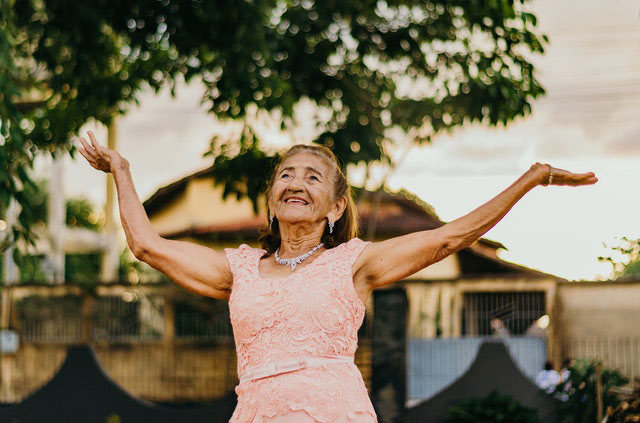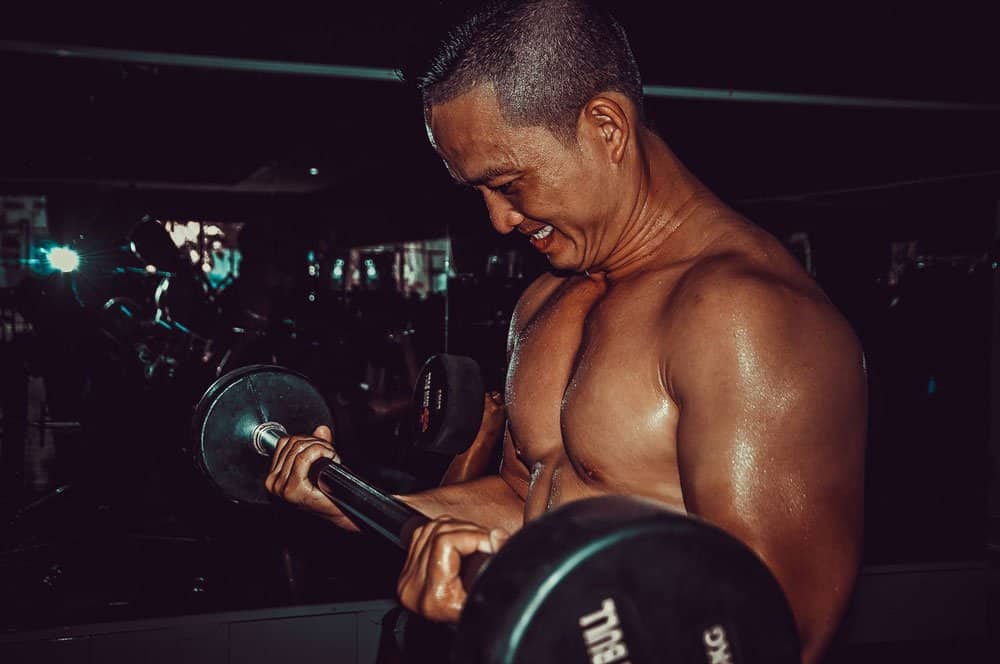Bodybuilding can help slow down the aging process. Some say it even makes them look younger. Have you seen Clayton Paterson a 60 year old former lawyer from Ohio, who recently discover bodybuilding?
Degeneration
Muscles and skin weaken as we age. If you don’t keep your strength up it will fail you. You lose what you don’t use.
Muscles start to degenerate the less they are used. It’s the same with flexibility, if you don’t keep nimble you will lose elasticity in your muscles and cease up.
You don’t have to be a muscle bound monster in your 60s and above, but performing exercise has proven to be the best anti-aging treatment there is.
If you don’t want to break your leg each time you bump into a chair when you are older a little exercise and strength/weight training routine will help you retain bone density and muscle strength.
Lack of Muscle Can Lead To Disease
It was usually thought that disease leads to muscle loss and degeneration, but the reverse is also true. If your bones are frail they are more likely to break if you have a fall or accident in your old age.
The NHS in the UK reports that 1 in 3 die within 12 months of breaking a hip. That is actually quite a scary thought.

Most of this is due in part to individuals who are already so frail they cannot recover from the hip surgery. They are usually bedridden for so long that the rest of their body degenerates.
This would explain why after going through hip surgery the medical staff like you to get up and moving just hours after the surgical procedure occurs.
The body functions a lot better if you reguarly move it. You can’t store it away like a classic 69 Dodge Super Bee, and expect it to charge when you take it out of the garage and open up the taps.
Weakened Grip Can Be A Forewarning To The Big Adios
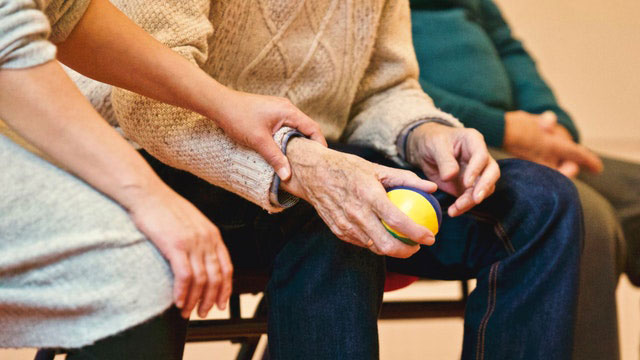
As we age our muscle mass starts to decrease. If it gets to the point where the grip starts to weaken, it increases the chance of death in the next few years. This BMA study conducted physical tests on aging individuals and found those who scored poorly had an increased chance of mortality.
A grip test was one of the benchmarks. It’s not just powerlifters and bodybuilders that need to work on their grip – it’s also elderly folk.
Low Impact Exercises That Can Be Done During Twilight Years
It doesn’t all have to be about pumping iron. Low impact exercises such as swimming and rowing are amazing full body workouts. They do not put a lot of stress on the body.
If you can’t get out to a swimming pool the Concept2 rowing machine is a practical alternative. It also folds so it won’t take up all your living space. You can read how Ernie who is well into his 70s is smashing records with it and retaining extreme fitness levels in our Concept2 review.
Training with resistance bands is also an extremely effective and safe exercise for seniors. It challenges the muscles in a safe way without overloading bones and tendons with undue stress.
Hill walks are also amazing as the gradient challenges you a little more and gets the heart pumping- no need to tackle Everest to reap the benefits.
And lets not forget about being active around the home….
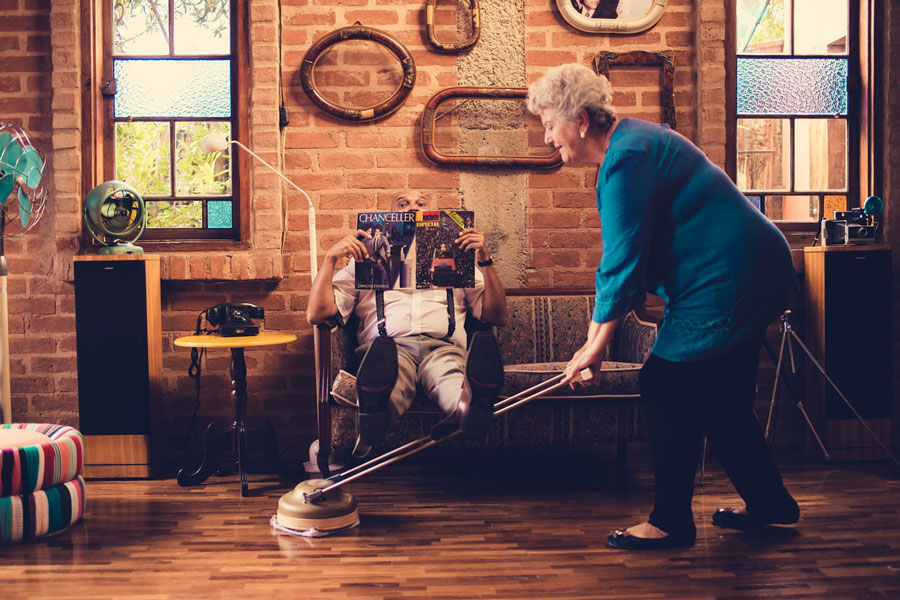
At 30 The Downward Spiral Begins
Bodies aren’t built to last forever. As you age bone mass shrinks as mineral depletion occurs. Skin becomes thinner and loses elasticity which makes the bones rise to the surface and become even more prominent looking.
As cell production inside your organs diminishes, the ability of your body to reproduce cells, which contributes to skin, muscle and bone regeneration slows down.
Or as the Governments Public Health website Medline Plus puts it – the minerals (phosphate & calcium) inside your bones can be reabsorbed which leads to weakened bones, which can eventually lead on to Osteoporosis.
One of the conditions that can lead your bones to becoming more brittle is being bedridden for a long period of time due to illness.
Adequate consumption of Calcium and Vitamin D is recommended to preventing bone fractures. If you aren’t eating enough foods rich in calcium and vitamin d your bones won’t be adequately protected.
Vitamin D also aids in the absorption of calcium in the intestines. It is one thing to have a good calcium intake, another to actually absorb it. As WebMD puts it – Vitamin D deficiency is linked to rickets, arthritis and osteoporosis and skeletal deformities.
Living Like A Vampire Weakens The Bones
If you don’t get enough sunlight vitamin d production can also lag. It is naturally produced in the body in response to sunlight. For foods rich in this essential vitamin look to dairy products, fish and wholegrain foods.

If you have dairy allergies look to supplementation, not just Vitamin D pills but also Omega fish oils which are not only rich in D but also essential fats as well.
I am not a big fan or replacing diet deficiencies with supplements. Especially as there are mixed reports concerning fish oils and the sunshine vitamin. Getting essential minerals and vitamins is always better when they are directly from the source – in the form of whole foods.
The clue about supplements is in the name. They are only designed to provide what is lacking. Many reports conclude they do a bad job.
Testosterone in men starts to drop as they approach 30. It’s as if your body has gone for being primed for youth to the descent into old age. Testosterone regulates a lot of functions in men and women, and many of these are related to aging.
At this age bones begin to get thinner, in both women and men. Bone mass can diminish at a much faster rate after women reach the menopause. As bones weaken they become more susceptible to arthritis and osteoporosis.
Our culture is biased against getting old, and looking old. None of us can cheat death. We are born, we die and we move on to meet our maker. By keeping active and performing resistance training, you can help beat a lot of age related problems, or at least lessen them. It can even combat depression.
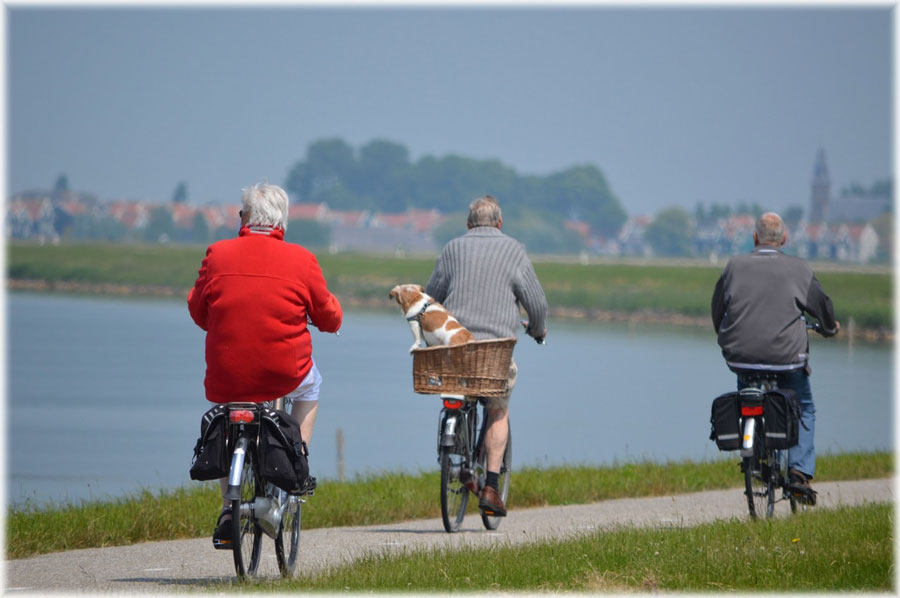
So What Has This All Got To Do With Bodybuilding?
Resistance training can combat the muscle loss associated with aging. It can maintain bone density (especially strength training) and increase mobility. This can improve your chances of being more steady on your feet and prevent falling, which is a whole new terror for the infirm or elderly.
Bodybuilding is also extremely good for the circulation and can help maintain normal blood pressure levels. There are many cognitive benefits such as helping with depression and improving memory which may keep Alzheimer’s disease at bay.
These all tie in with maintaining motor functions which is extremely beneficial for conducting an active lifestyle in your senior years.
The improved circulation that weight training brings is extremely beneficial for the brain. Not only does it keep fresh blood circulating but it also increases the flow of chemicals whose job is to protect the brain.
Diet is even more important than having a gym routine. In reference to the points made above, a healthy diet is a great weapon against the mass destruction of our bodies in old age. Vitamin D and calcium is essential for bone health.
Zinc is also essential for the immune system which is your best defense against disease and common illnesses such as colds and flus. A good immune system helps you rebound from illnesses much quicker and can prevent you going under to everyday ailments.
One final tip about diet is to keep the bowels moving and gut bacteria healthy. This can be achieved by eating fibrous foods, and if you are lacking here you can add a supplement that isn’t really a supplement, but a food source, namely seeds. Add some chia seeds to your diet to speed up bowel production.
The gut can be the source of a lot of illnesses if the bad bacteria overtake the good bacteria. The amount of “extra” sugar we also eat doesn’t help neither. Sugar can of course have benefits and eliminating it entirely from the diet in an overnight swoop can be extremely dangerous. Sugar is used in the form of glucose as energy for our cells.
In a balanced diet you get lots of sugar from natural food sources, including fruit. Sugar is also laced into many everyday products such as breads and cereals, so cutting back on “extra” sugary snacks and beverages is recommended.
Excessive sugar consumption is linked to obesity, which is linked to diabetes and scores of other illnesses. When combined with a sedentary lifestyle this can be fatal.
Gut health can be improved by eating bacteria rich food such as kiefer milk (full of naturally occurring probiotics) and yoghurts. Other foods that increase good bacteria are Kimchi, Sauerkraut, Natto.
Natto is a soyabean products so this depends on your tolerance to soya and its taste it is quite bitter. I generally hate soya products, but you may disagree. If you are a fussy eater kiefer is one of the most palatable recommendations from this bunch.
If you are spending money on pharmaceutical grade over the counter probiotics you can actually get the same benefit from Kiefer Yoghurt. Each spoonful contains millions of live bacteria cultures for much cheaper, and as they are live cultures naturally occuring in the food they will be easily absorbed. In whole foods it can also survive the digestive system.
Sometimes its far too easy to spend money over the counter rather than to eat something real and healthy. There doesn’t have to be a pill for every ill.
Kiefer has a thinner consistency in it’s milk form, in yoghurt it is a bit thicker. If you tend to gag easily the milk will be more palatable. You can get it in straight up milk, or if you are really adventurous you can get it in goats milk, with up to 35 strains of probiotics. If you want more exotic options you can get it in coconut milk and coconut water.
If you are hardcore you can buy kefir grains and ferment your own. It’s also usually suitable for anyone with a lactose intolerance. And if you have the grains who knows what concoction you might mix up. Kefir and Apple Pie? I might copyright that.
Finally this study published on NCBI reported the following benefits on physical activity in older adults.
Compared with the lowest activity quintile, the most active men and women reported better overall health and fewer depressive symptoms and were less likely to have hypertension, diabetes, obstructive lung disease, or coronary heart disease.The most active men, but not the most active women, had a lower prevalence of arthritis than their sedentary peers. Not surprisingly, the most physically active participants also reported less baseline functional impairment than their sedentary peers. –https://www.ncbi.nlm.nih.gov/pmc/articles/PMC3978479/
